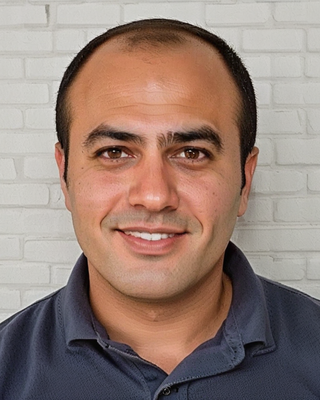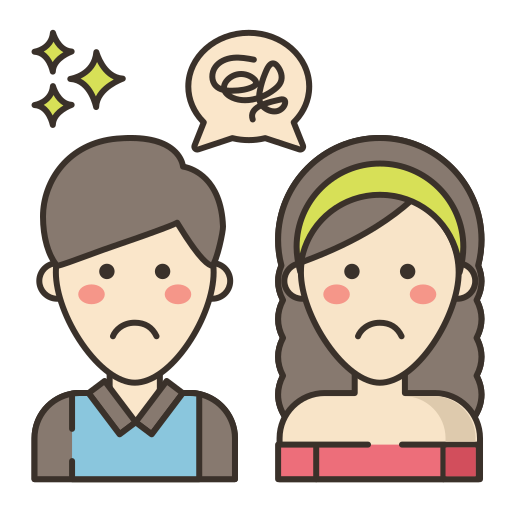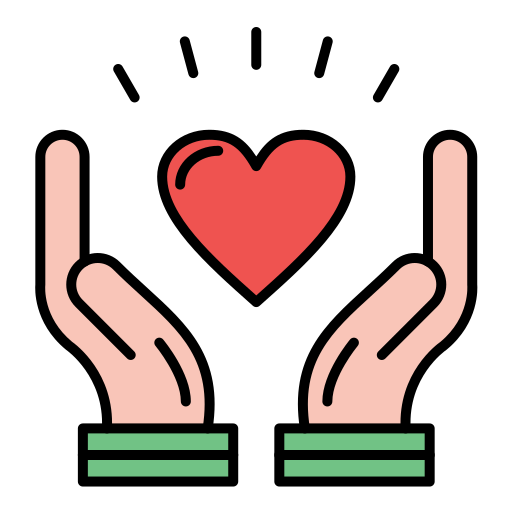A Wounded Healer
My Journey From Anxiety Disorders to Psychotherapy
My journey into psychotherapy began with my own experiences with anxiety. Like many of my clients, I know firsthand the overwhelming nature of anxiety and the isolation it can bring. This personal understanding has shaped my approach to therapy, combining professional expertise with genuine empathy.

My First Severe Anxiety Episode
I, Philip Henein, In the year of 2007, was 27 years old. I had spent six months pouring everything I had—my time, my money, my energy—into training for what I believed was my dream job. An international company, a prestigious role, a future I could finally be proud of. It wasn’t just a career move; it was my identity, my proof that I was worth something. My relationship with my girlfriend had already been on shaky ground, but this job? This was supposed to be the thing that held everything together.
And then, in a single moment, it was gone.
Read My Full Story Here
My boss—abusive, unpredictable—fired me over something so small. A minute dispute. A flicker of defiance from me. His face twisted in anger, and before I knew it, he was shouting, pointing at the door, telling me to get out. Just like that, everything I had built my future on crumbled.
I stood there, frozen, my ears ringing. My vision blurred. My body didn’t feel like my own. I wanted to scream, to fight back, to demand an explanation—but I couldn’t move. My legs buckled beneath me, and suddenly, I was on the floor. My breath came in short, shallow gasps. My heart slammed against my ribs so hard I thought I was having a heart attack. Something was very, very wrong. I stood there, stunned, my body unresponsive. My legs gave out, and I collapsed, gasping for air as my heart pounded. The room blurred, my hands trembled, and sounds faded. I couldn’t stand. I was sure I was dying. Next thing I knew, I was in my boss’s car, then at the hospital. Nurses hooked me up to machines, an IV cooling my veins. Slowly, my body steadied. Then the doctor’s words: “You had a severe anxiety episode.” I had never heard the word before. I didn’t know it then, but this was just the beginning.
Searching for Answers: The Medical Maze
I spent a few hours in the hospital bed, after a few days, the first stop was the cardiologist. I braced myself for the worst. A heart disease? A brain tumor? Something fatal lurking beneath the surface?
Most of the results came back normal. But not all of them.
The cardiologist sat me down and told me I had something called Wolff-Parkinson-White syndrome—WPW for short. A congenital heart condition. A small extra electrical pathway in my heart that could cause rapid heartbeats.
That stopped me in my tracks.
So, was it my heart? Was it anxiety? Or both? The lines between my body and my mind had started to blur.
At the time, I didn’t understand how this diagnosis would shape the way I saw my anxiety for years to come. All I knew was that I had one question with no answer—was it anxiety or my heart condition?
What my brain told me that I was for sure dying that day. I never found the certainty or comfort in doctors reports.
The Path to Intense Health Anxiety
In the few years that followed, the diagnosis of WPW have been disastrous. Some doctors told me it was benign, that I wasn’t in danger, that my heart wasn’t failing me, and I should not do anything about it. Others had said that I need some kind of ablation procedure, which I was so resistant of. At the same time, my brain refused to believe that I am safe.
Because on that day—the day of my first panic attack—I was sure I was dying. That certainty had burned itself into my nervous system, leaving behind a fear of death that refused to fade.
The everlasting question wasn’t if it was anxiety, for a few years I imagined that I am dying because of my heart condition. I did not understand that Anxiety and stress can do such things to my body. The uncertainty about my health and how fragile my body was were settling in.
Those thoughts followed me everywhere. I started obsessively monitoring my body and especially my heart, scanning for the slightest sign or a skipped heartbeat that something was wrong. A skipped heartbeat would send me in to fear spiral. Then, a tightness in my chest, a wave of dizziness—each one sent me spiraling into panic. The next few weeks after the incident became a constant cycle of fear and self-checking, a relentless search for reassurance that never lasted. No matter how many times doctors told me I was fine, my body felt broken, and my mind wouldn’t let it go.
The Second Panic Attack and the Onset of Chronic Symptoms
Meanwhile, life threw another twist my way.
During that time, my former boss—perhaps feeling guilt over how he had fired me—offered me my job back. On paper, this should have been good news. The job I had sacrificed so much for was back within reach. Now I will have to be dispatched and relocate to live in the country of South Sudan.
Back in 2008, South Sudan was almost a war zone, a place where instability and danger were a daily reality, and most terrifying for me, a country with no health care system and facilities that can provide immediate help if I experienced any kind of health crisis or to my heart condition. But despite the risks, I accepted under an immense pressure to redeem my relationship with my girlfriend.
It was there, far from home, in a place where safety was never guaranteed, that my second panic attack struck.
I still remember it vividly—the way it announced itself. One moment, I was in a car with a colleague going about my day. The next, I felt a creeping wave of dread rise up from nowhere. My heart rate shot up. My chest tightened. My limbs went cold. My vision blurred. The world around me suddenly felt distant and unreal. First thing came to my mind I was dying of a WPW episode.
But this time, it didn’t stop after a few minutes.
Unlike the first attack, which had been a terrifying but short-lived storm, this one left something behind. A lingering unease. A persistent tightness in my chest. A dizziness that wouldn’t fully go away. Foggy head, and what I knew what it is years after “depersonalization” I felt like in a dream-like state, unable to connect with anything or anyone around me. Life was fading away and I can’t understand what is happening. Everything looked far detached, away, and different. That was really terrifying to happen when I am away from home and all alone.
It was the beginning of something new.
From that moment on, the fear was no longer just in my mind—it was in my body, all the time. My symptoms never fully disappeared. They would ebb and flow, but they were always there. Chest pains, light-headedness, digestive issues, muscle tension, brain fog—each one feeding my fear that my body was shutting down.
Anxiety was no longer something that hit me in sudden waves. It had become my new reality. But I did not understand anxiety was the culprit.
And I had no idea how to escape what I am feeling. in addition to my great confusion about my heart condition I experience a wide range of different symptoms 24/7.
The Expanding Web of Symptoms
Over time, my anxiety began to manifest in a host of physical and psychological symptoms that extended far beyond the panic attacks and depersonalization. I experienced:
- Difficulty concentrating or reading.
- Tightness around my head.
- Blurred vision and light sensitivity
- Digestive issues and tingling sensations
- Chronic headaches and migraines
- Blurred vision and light sensitivity
- Digestive issues and tingling sensations
- Chronic headaches and migraines
- Panic Attacks on daily basis.
- Depersonalization / Derealization
- Brain fog
- Tightness in forehead.
- Blurred and foggy vision
- Tinnitus and noises in both ears
- My left side of my body always felt different than my right side
- Dry mouth
- Dizziness
- Eyes sensitivity to light
- Difficulty swallowing
- Hot flashes
- Digestive issues
- Intense fear of health risks
- Intense fear of social situation
- Difficulty interaction with people
- Fear of sleeping thinking that I am going to die during my sleep
- Fear of passing out
- Muscle tension, stiffness, pain
- Social anxiety
- Fear of losing control
- Fear of going crazy
- Intense Health Anxiety
- Chest Pain and discomfort
- intense fear of having heart attack
- Heart Palpitations
- Continuously checking of heart rate
- Tightness in my chest and shortness of breath
- Racing thoughts and an unrelenting fear of death
- Afraid of everything
- Constant fear of contracting diseases
- forgetfulness and memory issues
- Dysphagia (swallowing difficulties)
- feeling lump in my throat
- Frequent hot flashes
- Chronic muscular tension and widespread body pain
- Severe social anxiety: Every social interaction became overwhelming, convinced that others were scrutinizing my every move
- Overwhelming fear of losing self-control
- Persistent fear of mental deterioration
- Constant health-related anxiety
- Recurring chest discomfort
- Frequent heart palpitations
- Compulsive heart rate monitoring
- Muscle twitches
- Shooting pain in different areas of my body
- Weak legs and arms.
- Shortness of breath, unable to catch my breath
- Nausea
- Need to vomit
- Stomach acidity
- Acid reflux
- Repetitive respiratory tract infection
- Frequent urination
- Scared of letting go of control
- Constant hypervigilance
- Easily startled.
- Intrusive thoughts about losing control, fainting and dying
- Feeling detached from the world / people around me
- Feeling that no one understands what I am going through.
- Existential thoughts and fears.
- Catastrophizing
- Rushing to ER scared of panic attacks thinking I will die.
- Scared of flying
- Nightmares, panic attacks during sleep
- Every time I get a panic attack I think that my WPW is activated and I will get sinus / atrial fibrillation
- Scared of everything
- Social fear/ unable to mix with people
- Terrified of what medication can do to my body.
These symptoms were relentless, affecting every aspect of my daily life. I became hyper-aware of my body, hypervigilant of my surroundings, and constantly scanning for signs of impending danger. Each new sensation added another layer to my fear, creating a vicious cycle that seemed impossible to break.
The next few years were full of panic attacks, intense fear, intense search for reassurance in a country where is no medical care system. It was pure torture where I was away from my family. Nd my girlfriend that I was leaning on has broken up with me.
In the year 2011, I had to quit my job in South Sudan, and came back home for the intensity of symptoms.
From 2007 – 2011 I got introduced to a friend and another therapist who understood what anxiety is and helped me understand its impact on the body. I began a journey of self-exploration and discovery. I also started therapy which helped me a lot process my trauma and fear.
I tried many things to relief my symptoms include Xanax, which helped a little, but I couldn’t sustain any supply of it. I also tried an SSRI which withdrawal was brutal on me.
Reclaiming My Body and Emotions
For years, my life was ruled by an intense fear of my own symptoms and sensations. Every rapid heartbeat, every pang of discomfort, and every flicker of anxiety felt like a harbinger of catastrophe. This fear wasn’t confined to my physical experiences—it extended to my emotions, which I viewed as overwhelming and uncontrollable forces. It took me three long and challenging years to begin unraveling this fear, to learn how to coexist with my body and emotions rather than running from them. Slowly, I began to see these sensations not as enemies but as messages, guiding me toward healing and understanding.
Understanding the Physical Roots of Anxiety and Stress
As I ventured deeper into my recovery, I began to unravel the intricate connection between my mind and body. Anxiety and stress were no longer abstract emotions—they were physiological events with tangible effects on my body. I learned how chronic stress had kept my nervous system in a constant state of hyperarousal, amplifying every sensation and feeding the cycle of fear. Understanding how anxiety manifests physically—through a racing heart, tense muscles, shallow breathing, and digestive disturbances—was a revelation. It helped me see that my body wasn’t betraying me; it was responding predictably to the chaos within. This knowledge became a crucial step in demystifying my experiences and reclaiming control over them.
My Trauma Recovery Story
The 2007 incident didn’t just shake me—it rewired my entire way of seeing the world. It wasn’t just about losing a job; it was about betrayal, loss of control, and the terrifying realization that my body could turn against me at any moment.
• I was betrayed by the very people I had trusted with my future.
• I collapsed, my body shutting down in a way I never thought possible.
• I felt death creeping in, convinced that my heart would stop.
• My dreams vanished in an instant, leaving me lost and unanchored.
• I experienced depersonalization, a horrifying sense of being disconnected from reality.
• My blood pressure skyrocketed, and my nervous system never fully settled again.
• I developed a crippling fear of my own symptoms, no longer trusting my body to function normally.
From that moment on, my brain adopted new, deeply ingrained beliefs:
• The world is a dangerous place.
• People cannot be trusted.
• My body can fail me at any time.
• My heart is a ticking time bomb.
• Death could come for me at any moment, and I’d be powerless to stop it.
And perhaps the hardest one of all: I started resenting God.
I no longer felt safe—not in my own body, not in the world, not even in my faith. Relaxation became impossible. I lived in a constant state of hypervigilance, bracing myself for the next disaster.
The Long Road to Recovery
It took a few years after I came back home from south Sudan before I even began to loosen the grip of fear over my body.
1. I started learning about anxiety and the nervous system.
• I studied the physical effects of stress.
• I realized that my body wasn’t broken—just stuck in survival mode.
• I slowly accepted that my symptoms, while terrifying, weren’t deadly.
2. I began practicing deep relaxation—every single day.
• Mindfulness.
• Diaphragmatic breathing.
• Imagery and guided meditation.
• It took six months of daily practice before I finally felt a single moment of true relaxation.
3. I confronted my belief system.
• I questioned the fear-based thoughts I had accepted as truth.
• I started reshaping my views on safety, control, and trust.
4. I worked through the roots of my anxiety.
• I faced the childhood and adult experiences that had made me vulnerable to this breakdown.
• I stopped seeing anxiety as the enemy and started understanding what it was trying to protect me from.
5. I rebuilt my spirituality.
• I made peace with my anger toward God.
• I found a new way to approach faith, one that wasn’t rooted in fear or punishment.
6. I understood why I broke down.
• Years of unhealthy coping, people-pleasing, and internalized pressure had eroded my resilience.
• My mind and body had been screaming for help long before that day in 2006—I just hadn’t been listening.
7. I reframed my trauma.
• Instead of seeing it as the day my life ended, I started seeing it as the day my real healing began.
8. I worked on the deeper emotional wounds.
• Anxiety wasn’t just about my body—it was about my past, my beliefs, and my unresolved pain.
• Healing meant addressing all of it, not just the symptoms.
The Turning Point
I once thought I would never feel safe again.
But through patience, deep work, and relentless self-exploration, I found a way forward. I didn’t just learn to manage anxiety—I learned to rebuild my sense of self.
Today, I know this: Anxiety is not a death sentence. It is reversible.







